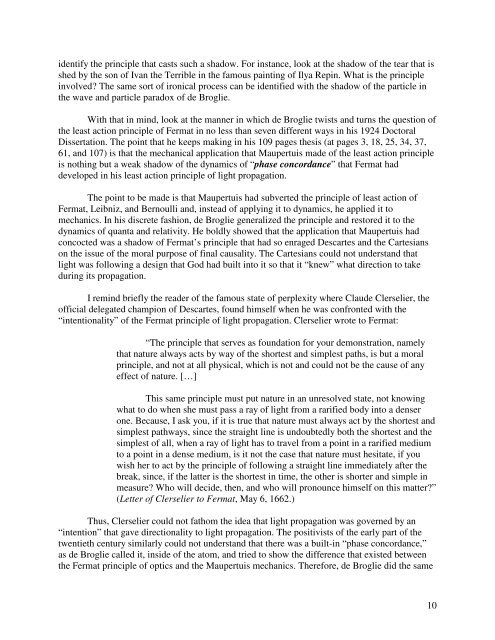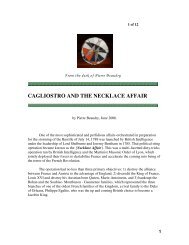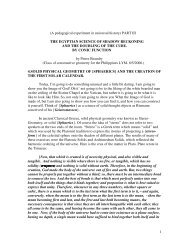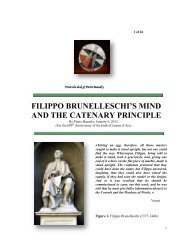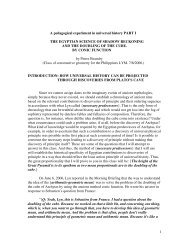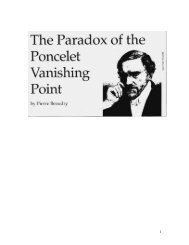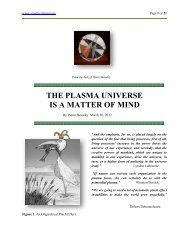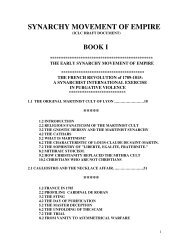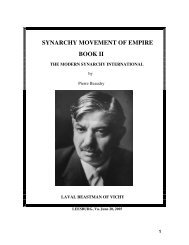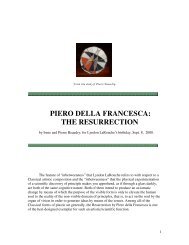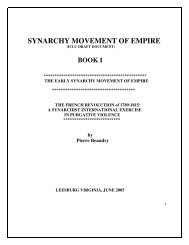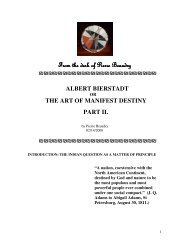LOUIS DE BROGLIE : THE WAVE AND PARTICLE PARADOX
LOUIS DE BROGLIE : THE WAVE AND PARTICLE PARADOX
LOUIS DE BROGLIE : THE WAVE AND PARTICLE PARADOX
You also want an ePaper? Increase the reach of your titles
YUMPU automatically turns print PDFs into web optimized ePapers that Google loves.
identify the principle that casts such a shadow. For instance, look at the shadow of the tear that isshed by the son of Ivan the Terrible in the famous painting of Ilya Repin. What is the principleinvolved? The same sort of ironical process can be identified with the shadow of the particle inthe wave and particle paradox of de Broglie.With that in mind, look at the manner in which de Broglie twists and turns the question ofthe least action principle of Fermat in no less than seven different ways in his 1924 DoctoralDissertation. The point that he keeps making in his 109 pages thesis (at pages 3, 18, 25, 34, 37,61, and 107) is that the mechanical application that Maupertuis made of the least action principleis nothing but a weak shadow of the dynamics of “phase concordance” that Fermat haddeveloped in his least action principle of light propagation.The point to be made is that Maupertuis had subverted the principle of least action ofFermat, Leibniz, and Bernoulli and, instead of applying it to dynamics, he applied it tomechanics. In his discrete fashion, de Broglie generalized the principle and restored it to thedynamics of quanta and relativity. He boldly showed that the application that Maupertuis hadconcocted was a shadow of Fermat’s principle that had so enraged Descartes and the Cartesianson the issue of the moral purpose of final causality. The Cartesians could not understand thatlight was following a design that God had built into it so that it “knew” what direction to takeduring its propagation.I remind briefly the reader of the famous state of perplexity where Claude Clerselier, theofficial delegated champion of Descartes, found himself when he was confronted with the“intentionality” of the Fermat principle of light propagation. Clerselier wrote to Fermat:“The principle that serves as foundation for your demonstration, namelythat nature always acts by way of the shortest and simplest paths, is but a moralprinciple, and not at all physical, which is not and could not be the cause of anyeffect of nature. […]This same principle must put nature in an unresolved state, not knowingwhat to do when she must pass a ray of light from a rarified body into a denserone. Because, I ask you, if it is true that nature must always act by the shortest andsimplest pathways, since the straight line is undoubtedly both the shortest and thesimplest of all, when a ray of light has to travel from a point in a rarified mediumto a point in a dense medium, is it not the case that nature must hesitate, if youwish her to act by the principle of following a straight line immediately after thebreak, since, if the latter is the shortest in time, the other is shorter and simple inmeasure? Who will decide, then, and who will pronounce himself on this matter?”(Letter of Clerselier to Fermat, May 6, 1662.)Thus, Clerselier could not fathom the idea that light propagation was governed by an“intention” that gave directionality to light propagation. The positivists of the early part of thetwentieth century similarly could not understand that there was a built-in “phase concordance,”as de Broglie called it, inside of the atom, and tried to show the difference that existed betweenthe Fermat principle of optics and the Maupertuis mechanics. Therefore, de Broglie did the same10


